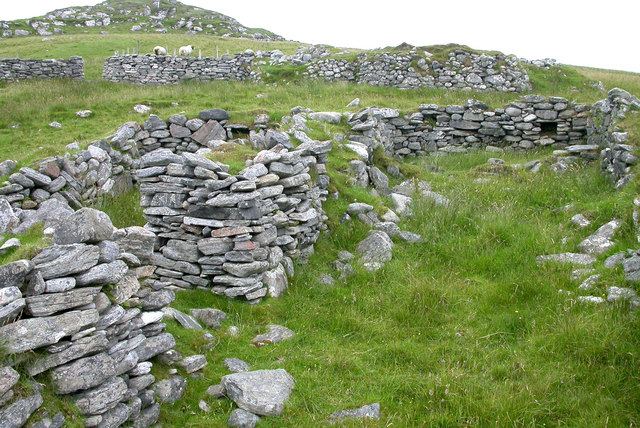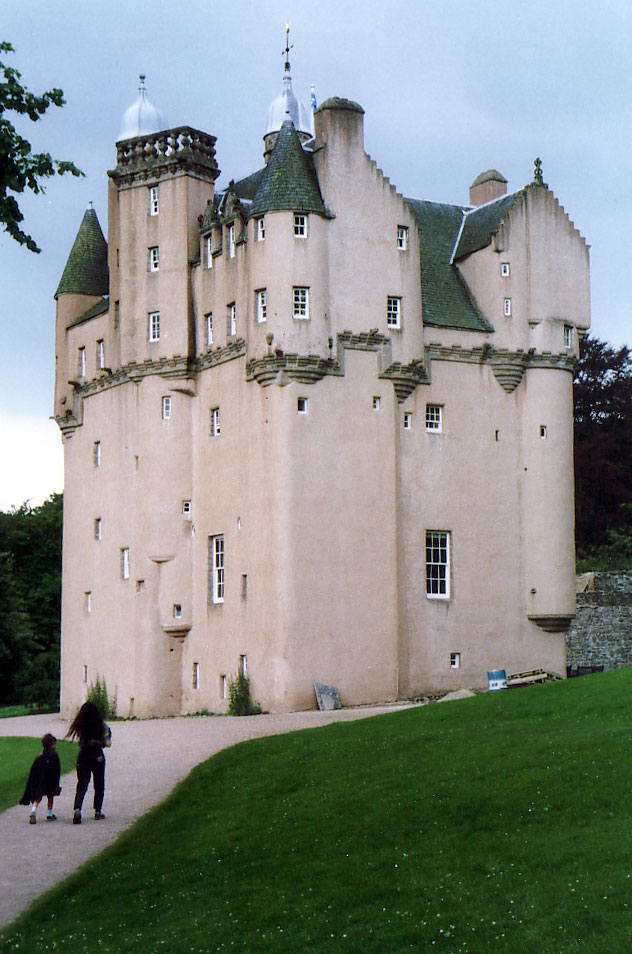|
Bucinch
Bucinch or Buc-Innis (Scottish Gaelic: "Buck Island" or "Male Goat Island") is a small island in Loch Lomond, in west central Scotland. The heavily wooded island lies due north of Inchcruin and rises steeply from a rocky coastline to in a central summit. Along with smaller neighbour, Ceardach, Bucinch was donated to the National Trust for Scotland by Col Charles L Spencer of Warmanbie, Dumfries, in 1943. Although uninhabited for centuries, there are remains of a stone jetty. Footnotes External links * https://web.archive.org/web/20090710015304/http://lochlomond-islands.com/ Article which mentions it Islands of Loch Lomond National Trust for Scotland properties Uninhabited islands of Stirling (council area) {{Scotland-geo-stub ... [...More Info...] [...Related Items...] OR: [Wikipedia] [Google] [Baidu] |
Bucinch - Geograph
Bucinch or Buc-Innis (Scottish Gaelic: "Buck Island" or "Male Goat Island") is a small island in Loch Lomond, in west central Scotland. The heavily wooded island lies due north of Inchcruin and rises steeply from a rocky coastline to in a central summit. Along with smaller neighbour, Ceardach, Bucinch was donated to the National Trust for Scotland The National Trust for Scotland for Places of Historic Interest or Natural Beauty, commonly known as the National Trust for Scotland ( gd, Urras Nàiseanta na h-Alba), is a Scottish conservation organisation. It is the largest membership organi ... by Col Charles L Spencer of Warmanbie, Dumfries, in 1943. Although uninhabited for centuries, there are remains of a stone jetty. Footnotes External links * https://web.archive.org/web/20090710015304/http://lochlomond-islands.com/ Article which mentions it Islands of Loch Lomond National Trust for Scotland properties Uninhabited islands of Stirling (council area) {{Sco ... [...More Info...] [...Related Items...] OR: [Wikipedia] [Google] [Baidu] |
Ceardach
Ceardach is a small uninhabited island in Loch Lomond, in west central Scotland. The island lies east of Bucinch and north of Inchcruin. The name ''Ceardach'' means a smithy. History Ceardach may have been the site of an Iron Age bloomery or furnace for smelting iron ore. Along with neighbour, Bucinch, the island, was donated to the National Trust for Scotland by Col. Charles L. Spencer of Warmanbie, Dumfries, in 1943. Flora A large variety of trees and other plants grow on the island, from seeds brought by birds, wind and water. There is a mature if stunted oak tree, willow, holly, briar, and bramble. References External links * Islands of Loch Lomond National Trust for Scotland properties Iron Age sites in Scotland Uninhabited islands of Stirling (council area) {{Stirling-geo-stub ... [...More Info...] [...Related Items...] OR: [Wikipedia] [Google] [Baidu] |
National Trust For Scotland Properties
National Trust for Scotland properties is a link page listing the cultural, built and natural heritage properties and sites owned or managed by the National Trust for Scotland. Aberdeen and Grampian *Castle Fraser, Garden & Estate *Craigievar Castle *Crathes Castle, Garden & Estate *Drum Castle, Garden & Estate *Fyvie Castle *Haddo House *Leith Hall, Garden & Estate *Mar Lodge Estate & Mar Lodge *Pitmedden Garden Angus *Angus Folk Museum * Barry Water Mill * Finavon Doocot *House of Dun & Montrose Basin Nature Reserve *J. M. Barrie's Birthplace, Kirriemuir Argyll, Bute and Loch Lomond * Arduaine Garden *Ben Lomond *Bucinch & Ceardach * Crarae Garden *Geilston Garden, Cardross *Hill House, Helensburgh *Tighnabruaich Viewpoint Ayrshire and Arran *Bachelor's Club *Brodick Castle, Garden & Country Park *Culzean Castle & Country Park * Goatfell *Robert Burns Birthplace Museum *Souter Johnnie's Cottage Central Scotland *Alloa Tower *Bannockburn *Ben Lawers National Nature Reserve * ... [...More Info...] [...Related Items...] OR: [Wikipedia] [Google] [Baidu] |
Loch Lomond
Loch Lomond (; gd, Loch Laomainn - 'Lake of the Elms'Richens, R. J. (1984) ''Elm'', Cambridge University Press.) is a freshwater Scottish loch which crosses the Highland Boundary Fault, often considered the boundary between the lowlands of Central Scotland and the Highlands.Tom Weir. ''The Scottish Lochs''. pp. 33-43. Published by Constable and Company, 1980. Traditionally forming part of the boundary between the counties of Stirlingshire and Dunbartonshire, Loch Lomond is split between the council areas of Stirling, Argyll and Bute and West Dunbartonshire. Its southern shores are about northwest of the centre of Glasgow, Scotland's largest city. The Loch forms part of the Loch Lomond and The Trossachs National Park which was established in 2002. Loch Lomond is long and between wide, with a surface area of . It is the largest lake in Great Britain by surface area; in the United Kingdom, it is surpassed only by Lough Neagh and Lough Erne in Northern Ireland. In the Briti ... [...More Info...] [...Related Items...] OR: [Wikipedia] [Google] [Baidu] |
Stirling (council Area)
The Stirling council area ( sco, Stirlin; gd, Sruighlea) is one of the 32 council areas of Scotland, and has a population of about ( estimate). It was created under the Local Government etc (Scotland) Act 1994 with the boundaries of the Stirling district of the former Central local government region, and it covers most of Stirlingshire (except Falkirk) and the south-western portion of Perthshire. Both counties were abolished for local government purposes under the Local Government (Scotland) Act 1973. The administrative centre of the area is the city of Stirling, with the headquarters at Old Viewforth. The area borders the council areas of Clackmannanshire (to the east), North Lanarkshire (to the south), Falkirk (to the south east), Perth and Kinross (to the north and north east), Argyll and Bute (to the north and north west), and both East and West Dunbartonshire to Stirling's southwest. The majority of the population of the area is located in its southeast corner, in the ... [...More Info...] [...Related Items...] OR: [Wikipedia] [Google] [Baidu] |
List Of Islands Of Scotland
This is a list of islands of Scotland, the mainland of which is part of the island of Great Britain. Also included are various other related tables and lists. The definition of an offshore island used in this list is "land that is surrounded by seawater on a daily basis, but not necessarily at all stages of the tide, excluding human devices such as bridges and causeways". Scotland has over 790 offshore islands, most of which are to be found in four main groups: Shetland, Orkney, and the Hebrides, sub-divided into the Inner Hebrides and Outer Hebrides. There are also clusters of islands in the Firth of Clyde, Firth of Forth, and Solway Firth, and numerous small islands within the many bodies of fresh water in Scotland including Loch Lomond and Loch Maree. The largest island is Lewis and Harris which extends to 2,179 square kilometres, and there are a further 200 islands which are greater than 40 hectares in area. Of the remainder, several such as Staffa and the Flannan Isles ... [...More Info...] [...Related Items...] OR: [Wikipedia] [Google] [Baidu] |
Scottish Gaelic
Scottish Gaelic ( gd, Gàidhlig ), also known as Scots Gaelic and Gaelic, is a Goidelic language (in the Celtic branch of the Indo-European language family) native to the Gaels of Scotland. As a Goidelic language, Scottish Gaelic, as well as both Irish and Manx, developed out of Old Irish. It became a distinct spoken language sometime in the 13th century in the Middle Irish period, although a common literary language was shared by the Gaels of both Ireland and Scotland until well into the 17th century. Most of modern Scotland was once Gaelic-speaking, as evidenced especially by Gaelic-language place names. In the 2011 census of Scotland, 57,375 people (1.1% of the Scottish population aged over 3 years old) reported being able to speak Gaelic, 1,275 fewer than in 2001. The highest percentages of Gaelic speakers were in the Outer Hebrides. Nevertheless, there is a language revival, and the number of speakers of the language under age 20 did not decrease between the 2001 and ... [...More Info...] [...Related Items...] OR: [Wikipedia] [Google] [Baidu] |
Scotland
Scotland (, ) is a country that is part of the United Kingdom. Covering the northern third of the island of Great Britain, mainland Scotland has a border with England to the southeast and is otherwise surrounded by the Atlantic Ocean to the north and west, the North Sea to the northeast and east, and the Irish Sea to the south. It also contains more than 790 islands, principally in the archipelagos of the Hebrides and the Northern Isles. Most of the population, including the capital Edinburgh, is concentrated in the Central Belt—the plain between the Scottish Highlands and the Southern Uplands—in the Scottish Lowlands. Scotland is divided into 32 administrative subdivisions or local authorities, known as council areas. Glasgow City is the largest council area in terms of population, with Highland being the largest in terms of area. Limited self-governing power, covering matters such as education, social services and roads and transportation, is devolved from the Scott ... [...More Info...] [...Related Items...] OR: [Wikipedia] [Google] [Baidu] |
Inchcruin
Inchcruin is an island in Loch Lomond in Scotland. It is not to be confused with Creinch, which has occasionally been referred to as "Inchcroin". Geography Inchcruin is one of an island group just south of Luss. It is long, and in elevation at its highest point. Its name means "round island" in the Scottish Gaelic language, although it is not round, but a rather jagged shape. It has a couple of beaches, and is wooded, with some open fields. Only a very narrow channel, called the Geggles separates Inchcruin from Inchmoan. At only deep, it is sometimes possible to wade between the islands.Worsley, Harry ''Loch Lomond: The Loch, the Lairds and the Legends'' Lindsay Publications (Glasgow) 1988 History The travel writer, H.V. Morton visited Loch Lomond in the 1930s, and mentions Inchcruin briefly and wrongly as "Inchcruim". In the 18th century it was used as an asylum for the insane. It contains one house, around 200 years old, which was inhabited in the past by people who f ... [...More Info...] [...Related Items...] OR: [Wikipedia] [Google] [Baidu] |
National Trust For Scotland
The National Trust for Scotland for Places of Historic Interest or Natural Beauty, commonly known as the National Trust for Scotland ( gd, Urras Nàiseanta na h-Alba), is a Scottish conservation organisation. It is the largest membership organisation in Scotland and describes itself as "the conservation charity that protects and promotes Scotland's natural and cultural heritage for present and future generations to enjoy". The Trust owns and manages around 130 properties and of land, including castles, ancient small dwellings, historic sites, gardens, coastline, mountains and countryside. It is similar in function to the National Trust, which covers England, Wales, and Northern Ireland, and to other national trusts worldwide. History The Trust was established in 1931 following discussions held in the smoking room of Pollok House (now a Trust property). The Trust was incorporated on 1 May 1931, with John Stewart-Murray, 8th Duke of Atholl being elected as its first president, ... [...More Info...] [...Related Items...] OR: [Wikipedia] [Google] [Baidu] |
Islands Of Loch Lomond
An island (or isle) is an isolated piece of habitat that is surrounded by a dramatically different habitat, such as water. Very small islands such as emergent land features on atolls can be called islets, skerries, cays or keys. An island in a river or a lake island may be called an eyot or ait, and a small island off the coast may be called a holm. Sedimentary islands in the Ganges delta are called chars. A grouping of geographically or geologically related islands, such as the Philippines, is referred to as an archipelago. There are two main types of islands in the sea: continental and oceanic. There are also artificial islands, which are man-made. Etymology The word ''island'' derives from Middle English ''iland'', from Old English ''igland'' (from ''ig'' or ''ieg'', similarly meaning 'island' when used independently, and -land carrying its contemporary meaning; cf. Dutch ''eiland'' ("island"), German ''Eiland'' ("small island")). However, the spelling of the word ... [...More Info...] [...Related Items...] OR: [Wikipedia] [Google] [Baidu] |






